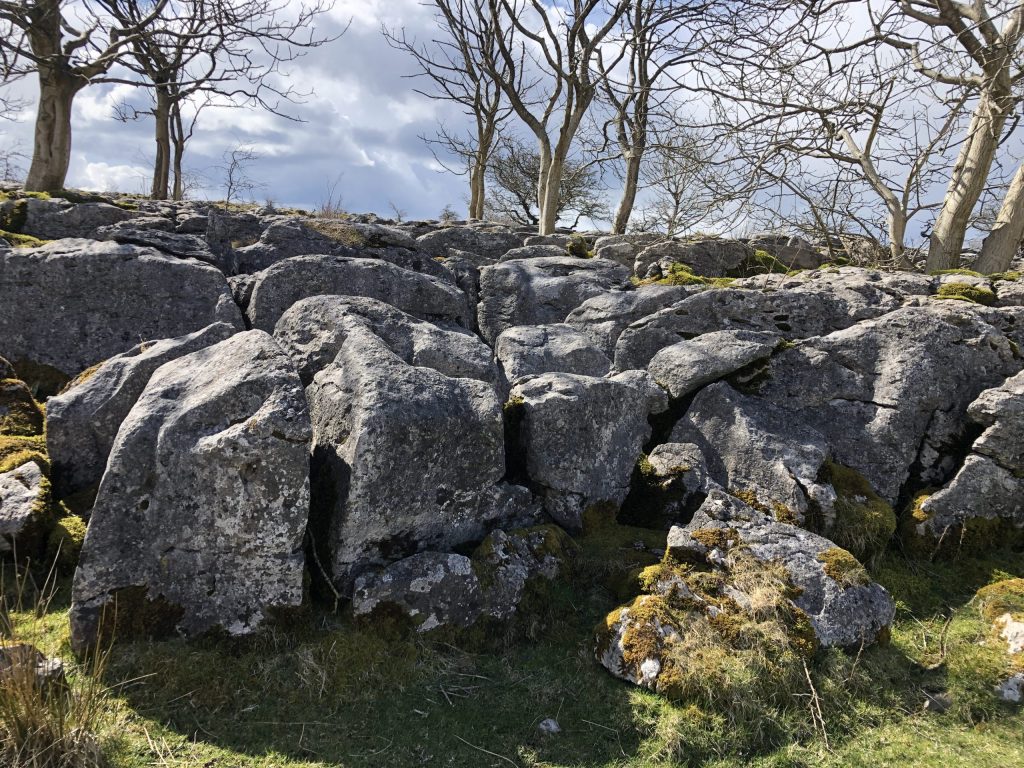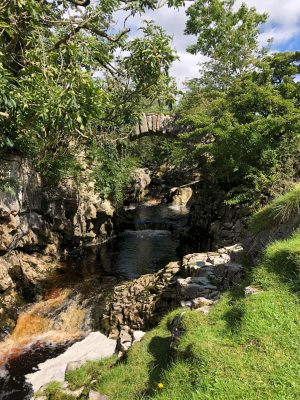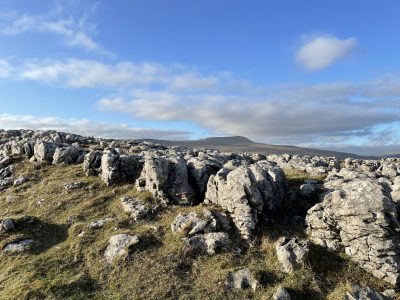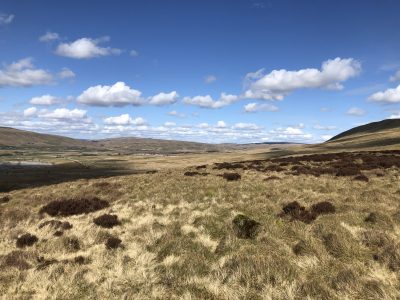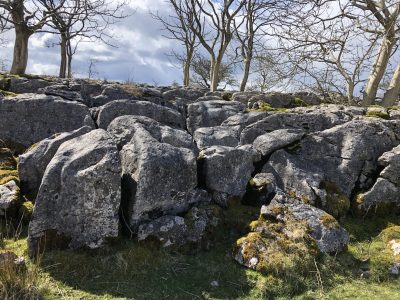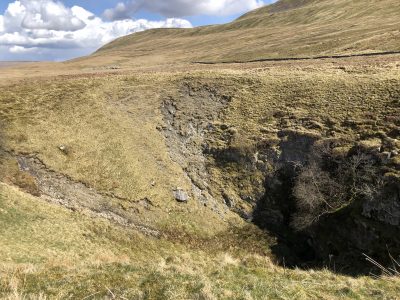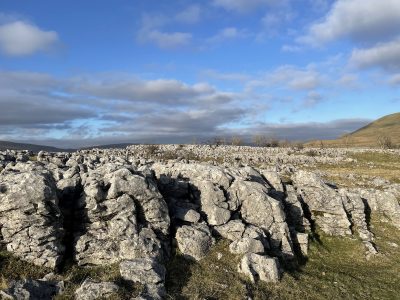On This Rock.
Ribblehead Viaduct two years ago and before COVID had entered anyone’s consciousness. It is a bright sunny day with sun bouncing off the green hills. This is a place steeped in history, echoing with the past, redolent of the voices and clamour of the navvies who dug through the hills to lay railway lines, who heaved the stones for the mighty, curved viaduct. This was an engineering feat which opened up the route to Scotland. It involved thousands of men, some with their families who lived in a series of camps like shanty towns. They were skilled workers and labourers. The name of each camp was reminiscent of other camps from the recent Crimean war or were heavily ironic; Sebastopol and Inkerman; Jerusalem and Jordan; Batty Wife Hole and Belgravia. They dug holes up to 24 feet deep through peat and boulder clay to reach the limestone bedrocks, the last time such a venture was undertaken without mechanical diggers. They were called navvies because the men who had constructed the canals in the same period were navigators and by sleight of semantic change the abbreviation navvy came to imply an unskilled labourer prone to violence and wild living. How often such language change slides into the negative. Note how it reflects the values of a society – how the man who hews rock is now forgotten but not before in popular memory he has become associated with rough immorality.
The viaduct is still in use as a memorial to those men but nothing remains of these camps and they were no place for humanity. The nearest church was and is the chapel of rest in Chapel Le Dale some four miles away. There, over a hundred souls are buried in unmarked graves. The contagion then was smallpox from which more died than anything else, although industrial injuries counted for many. Pre unions, pre Health and Safety, lives were cheap, as was labour. Such use of humans for bulldozing made the impossible happen. We still benefit from the work of those who laboured and blasted, and gems like the exhibition honouring their work in the Ribblehead Station matter. Thirsty holidaymakers these days will find exhibitions in the old ticket room with fruitcake served with cheese, in Yorkshire fashion, in the café now run by volunteers.
Arthur Ransome’s iconic novels of children’s holidays in the 1930s often begin with a train journey. His novels, like so many adventure stories, begin with the start of a holiday, tracking the feeling of leaving routine behind, of watching the landscape change. Even now, as you travel from Leeds across the Pennines, the hills begin to assert themselves and the chatter of passengers linguistically charts changing accents as you travel. You can listen in on conversations about which trains go where, and from which siding, although most people are now glued to their phones rather than sticking their noses over pulled down windows. Still, nothing can beat that beginning of holiday feeling. The sense of all that is to come.
We began that Wednesday meeting my husband and son at Ribblehead – a station in the middle of nowhere, above the tree line and a happy destination for people walking the Yorkshire Dales Three Peaks. We had knapsacks stuffed with essentials like chocolate and biscuits (though no pemmican). We left the station and walked past the viaduct and up the meandering Northern approach to Whernside which follows the railway track passing over tunnels made obvious only by the ventilation holes still in the hills. This is a magical place where rivers have not been polluted by the toxins of farming and so it is home to a wide variety of birds and insects. Not to mention enormous slugs sitting on the path. Biodiversity is not always elegant.
Grike – the rock block
The sun shone and we spoke of many things, played games and stopped to look at the engineering miracle of managing a river so that it flowed over the rail track. We met hardly anyone, for this is not a fashionable place – just the odd runner or jolly dog walker. As we neared the top of Whernside, past the dark tarn, watching the swallows wheeling and listening to the curlews, we could also hear a helicopter making repeated passes up the hill. It was bringing buckets of hard standing. The path was being mended by men with spades. Just like olden times then. Incredibly, some walkers were heard complaining that the men digging had been dropped by helicopter and they wondered why they hadn’t been offered a ride. The eroded path has been rebuilt with beautiful green stones which my son recognised from Minecraft – a new generation familiar with the names of obsidian, granite, blackstone and gold ore – how the present intersects with the past.
We tumbled off the hill, the sunshine out, past clumps of pine trees and the pub beckoning, rich grasses swaying by our sides. Past the farm we sped, signs posted in the ground offering pints of squash and on to the inn which hasn’t been decorated since the last century but which is rammed with character and furniture. You can sit in a tiny space next to a piano and play it or use for resting your drink. And thence home. In Pigeon Post the children sail on their first afternoon. We had walked. Not bad for a first day.
In Pigeon Post, written at a time when tents were made of canvas slung over a tree and hemmed to the floor with rocks, the children explore old copper mines. Deep underneath the hills, they meet Slater Bob, a relic of a century before. He holds the secrets of the underground minerals to be excavated and knowledge of the ancient passages, some naturally formed, some hewn by hand. This story is of the magic of tunnels and of caves unwittingly found; of haven from wildfire and refuge from the heat; of campers chilling food in naturally cold places. My mum born in 1942 used to tell us that before they got a fridge, butter was always rancid in summer. How funny that seemed to us. Generations of elders tell their children stories and, if born at reasonable intervals, they cross the centuries fairly effortlessly, but only the rocks and the hills hold memories of 35,000 years ago and more.
Human exploration is as old as the hills but so is the love of tramping a well-worn path. I have walked the western ascent of Ingleborough more times than I can count. Every weather and every time of year. Sunshine and gloom. Darkling and bright. Alone and in crowds (this is a busy route in Summer), with children who never take a path but who climb up the rock into which a hawthorn has grown and over the limestone pavement. Forced to jump, clamber, slide, this is an exhausting way to travel. This is no smooth suburban pavement. This is rock, clint, more gap and groove. Here are grikes – fissures shaped over thousands of years – uneven spaces that defy feet and boots. As John O’Donohue says, this landscape was created “without human intervention”. The mountains don’t need us.
Grike – a distinctive feature of Yorkshire Dales limestone
Towards the ascent to the summit is a swallow hole. One of many invitations to slide or clamber offered by this landscape. These surprising spaces on the side of the hill help us as we fumble towards understanding moments where the fragility of life and the enormity of tragedy can seem overwhelming. They defy description. In the Gospels the story of the Passion tells of a hill called Golgotha. The tomb is cave. A rock is moved away leaving that space empty where the body lay. The women coming to the tomb find emptiness. They find nothing. The infinity of grief is right there.
Cave entrance – swallow hole
Peter is the rock on whom the Church is built. His name denotes stone. Interesting that the word petrified is derived from this, suggesting terror creates solidity. But rock moves – over thousands of years I grant you, but nevertheless it is not utterly fixed. Since COVID struck, we have looked in the eye of great fear and even terror. The ground shifted beneath our feet. We collectively faced death and we endured untold losses. It is time to let go of the idea that safety lies in what is solid. The rocks have cracks not because they are flawed but because of time’s movement. We need to see into the spaces where there is new meaning. Creativity is there like the plants that grow in the grikes: Hart’s-Tongue Fern, Dark-Red Helleborine, Downy Currant. The air is there. Breath. New life next to old certainties.
We need to find fresh ways through these times. Old ways won’t do. We are walking on limestone pavement where clints, grikes and uneven surprises await.
We might need to concentrate on where we put our feet for a while. Perhaps take a hand where it’s offered. Sit for a while and look at the view. Notice the sunshine playing and be glad.
Limestone pavement
Categories: Faith Life Headteacher's Blog Priory Post Whole School
